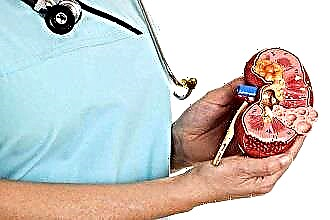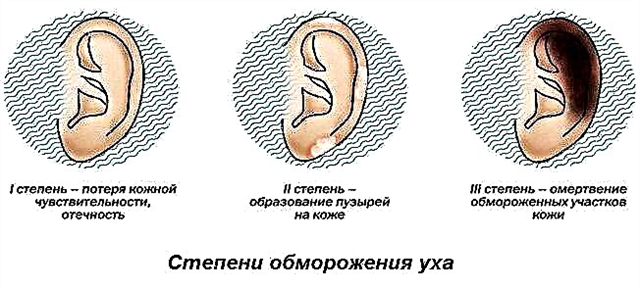Mechanism of action
Among the most important factors affecting the state of hemodynamics, and, in particular, blood pressure, is the functioning of the renin-angiotensin-aldosterone system (RAAS). Activation of this chain of biologically active substances leads to an increase in pressure, inhibition - to a decrease. Enalapril blocks the work of the angiotensin-converting enzyme, which transforms inactive angiotensin I into active angiotesin II. This peptide has two properties. First, it causes the blood vessels to spasm, increasing peripheral resistance. Secondly, it stimulates the formation and secretion of aldosterone, a hormone that prevents the excretion of water from the body, thereby increasing the BCC (circulating blood volume).
Thus, blocking ACE leads to a decrease in the synthesis of angiotensin II, and, consequently, to a decrease in the circulating blood volume and peripheral vascular resistance, which entails a drop in blood pressure. This also contributes to an increase in the ejection fraction, a weakening of pre- and afterload, which makes it possible to reduce the manifestations of heart failure, and causes a regression of ventricular hypertrophy.
In addition, Enap is capable of acting as a diuretic, which is achieved through two mechanisms. First, by inhibiting ACE, which reduces the activity of aldosterone, which promotes fluid retention. Secondly, by blocking the utilization of bradykinin, which, in turn, stimulates the synthesis of prostaglandins, which have a vasodilating (vasodilating) and diuretic (diuretic) effect.
At the same time, having a hypotensive effect, Enap does not reduce cerebral blood flow. Another advantage is the absence of a "withdrawal syndrome" - a sharp increase in pressure after stopping the use of the drug.
Indications and application features
There are the following indications for Enap's use:
essential arterial hypertension at all stages;
- renovascular hypertension;
- symptomatic hypertension;
- chronic heart failure;
- ischemic disease (angina pectoris, heart attack);
- left ventricular dysfunction (including asymptomatic);
- microalbuminuria.
Studies have shown that the drug has a good effect for the treatment of hypertension in children from 6 years of age, while it is quite safe. Enalapril therapy usually lasts a long time, as may be required, even throughout life (except in circumstances in which it is necessary to discontinue the drug).
How to take the drug and in what doses?
Enap is available in tablets and in the form of a solution for injection.
Enap tablets are swallowed without chewing with ordinary drinking water. Food in this case does not matter, you can take the medicine both before and after it, the main thing is that it is systematic, at the same time. It is forbidden to take breaks in the treatment course. If you missed an appointment for any reason, you must take the pill as soon as possible without changing the dose. The dosage should be adjusted only by a cardiologist, depending on the patient's condition.
With arterial hypertension, start with 5 mg 1 time / day. For the first time, patients require medical supervision for at least 2 hours. If necessary, further dose adjustments are made to achieve the desired clinical result. Every 7-14 days, it is allowed to add 5 mg (usually stop at 10-20 mg). The maximum daily dose is no more than 40 mg. Moreover, it can be divided into two parts.
If the patient is taking a diuretic in parallel, the starting dose is reduced to 2.5 mg / day. The same will be true in the presence of a low sodium level (less than 130 mmol) or with an increased content of creatinine (more than 140 μmol / l), as well as with renal hypertension.
In the presence of renal diseases, the dosage is prescribed according to the creatinine clearance (CC) indicators. With CC more than 30, they start from 5 mg / day, with CC less than 30 - from 2.5 mg / day. If the patient is undergoing hemodialysis, on the appropriate days, the dose is reduced to 2.5 mg, and then adjusted according to the pressure indicators.
For patients after 50 years, a stronger and more prolonged effect of the drug is characteristic, therefore it is recommended to start with 1.25 mg / 1 time per day.
For the treatment of manifestations of heart failure, the initiating dose is 2.5 mg / 1 time per day, then it is increased within 2-4 weeks to clinically effective (usually up to 10 mg / day). The maximum daily allowance should not be more than 20 mg / 2 times.
For left ventricular dysfunction, a starting dose of 2.4 mg / 2 times a day is indicated, which is eventually increased to 10 mg / twice a day.
Remember that only a specialist can correctly calculate the dose. Do not self-medicate, this can cause the development of serious complications.
Contraindications and side effects
Enalapril is contraindicated in the following conditions:
- increased individual sensitivity (also to other members of this group);
- history of severe allergic reactions (associated with previously used ACE inhibitors, idiopathic);
- period of breastfeeding (lactation);
- hormonal pathologies (diabetes mellitus)
- pregnancy;
- chronic or acute kidney failure;
- porphyria;
- children under 6 years old.
Along with taking the medicine, the use of alcohol is prohibited, since in this case Enap can cause arterial hypotension.
Side effects of Enap occur quite rarely - more often when the dose is exceeded or if the doctor's instructions are not followed. They are usually mild. Do not be afraid of such a large list - even those reactions that develop with a very low probability are taken into account here, especially against the background of other diseases.
On the part of the organs of the cardiovascular system, the following can be observed:
- hypotension;
- collapse, fainting;
- angina cardialgia;
- rhythm disturbances.
The nervous system may have the following symptoms:
dizziness, sleep disorder;
- asthenic syndrome;
- increased excitability;
- hearing impairment, vision, sense of balance;
- vegetative disorders;
- hearing impairment, vision, balance, tinnitus;
On the part of the respiratory system, there are:
- shortness of breath, bronchospasm, asthma;
- cough;
- pharyngitis, rhinitis.
The gastrointestinal tract is characterized by:
- dyspeptic disorders, diarrhea or constipation;
- pancreatitis, drug-induced hepatitis;
- an increase in the level of bilirubin (including the occurrence of jaundice) and the activity of transaminases;
From the genitourinary system:
- urinary syndrome;
- impotence, gynecomastia, decreased libido.
Dermatological and allergic reactions:
- photosensitivity, alopecia;
- skin rash;
Instructions for use Enap contains a larger list of adverse reactions, you can familiarize yourself with them on the package insert.
Almost all of these changes are mild, completely reversible and disappear after stopping the medication or adjusting the dosage.
It is not recommended to use this drug in combination with the following medicines:
- potassium-sparing diuretics;
- antidiabetic agents;
- lithium preparations.
Conclusions
The drug Enalapril "Enap" belongs to the group of angiotensin-converting enzyme inhibitors, has a strong hypotensive and slight diuretic effect. It is successfully used to combat all types of arterial hypertension, and also helps with chronic heart failure, in the complex therapy of many other diseases.
Over the years, the drug has shown itself to be an effective and safe remedy, with very rare occurrences of side effects. Correct dosage and responsible observance of the doctor's instructions will contribute to a successful and harmless treatment with this medication.



